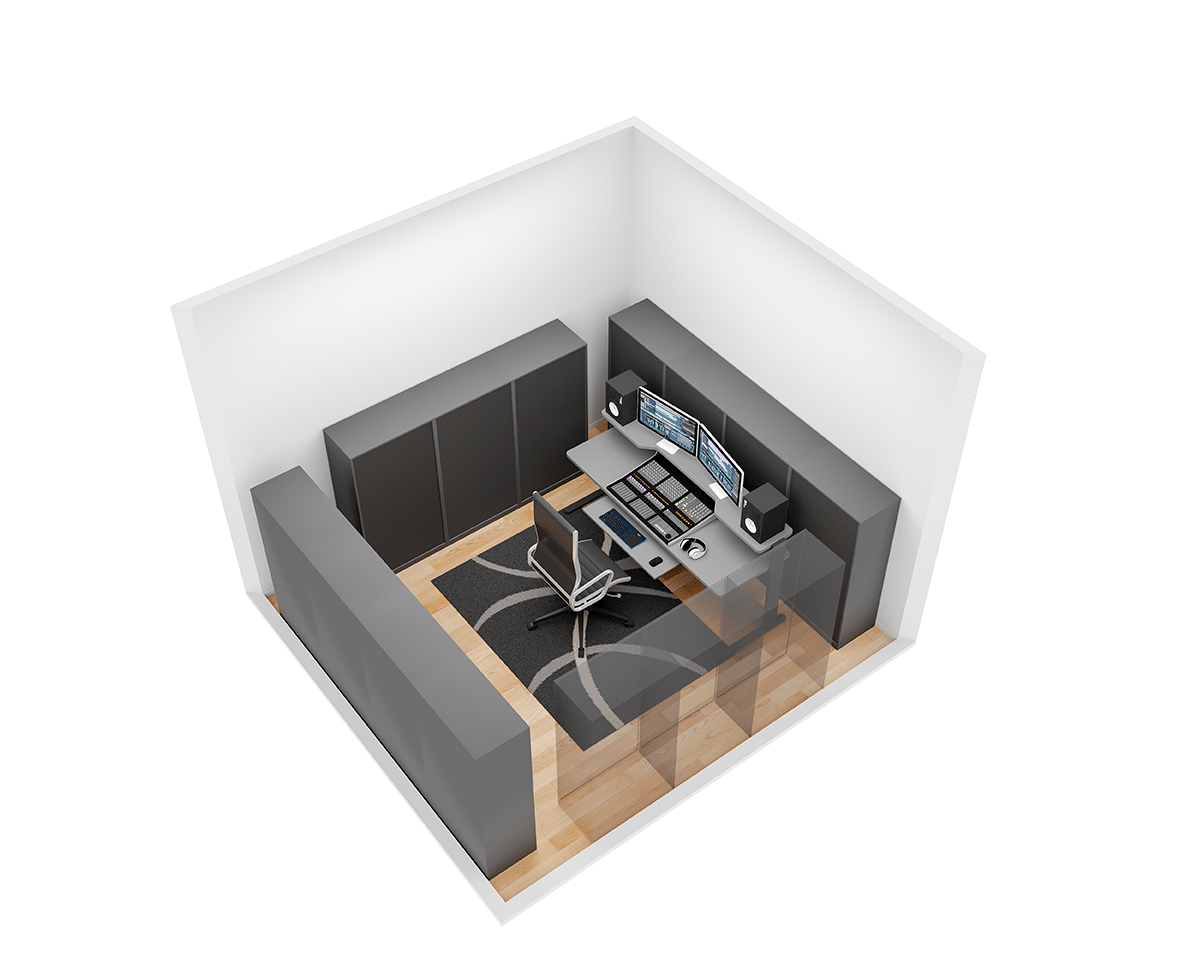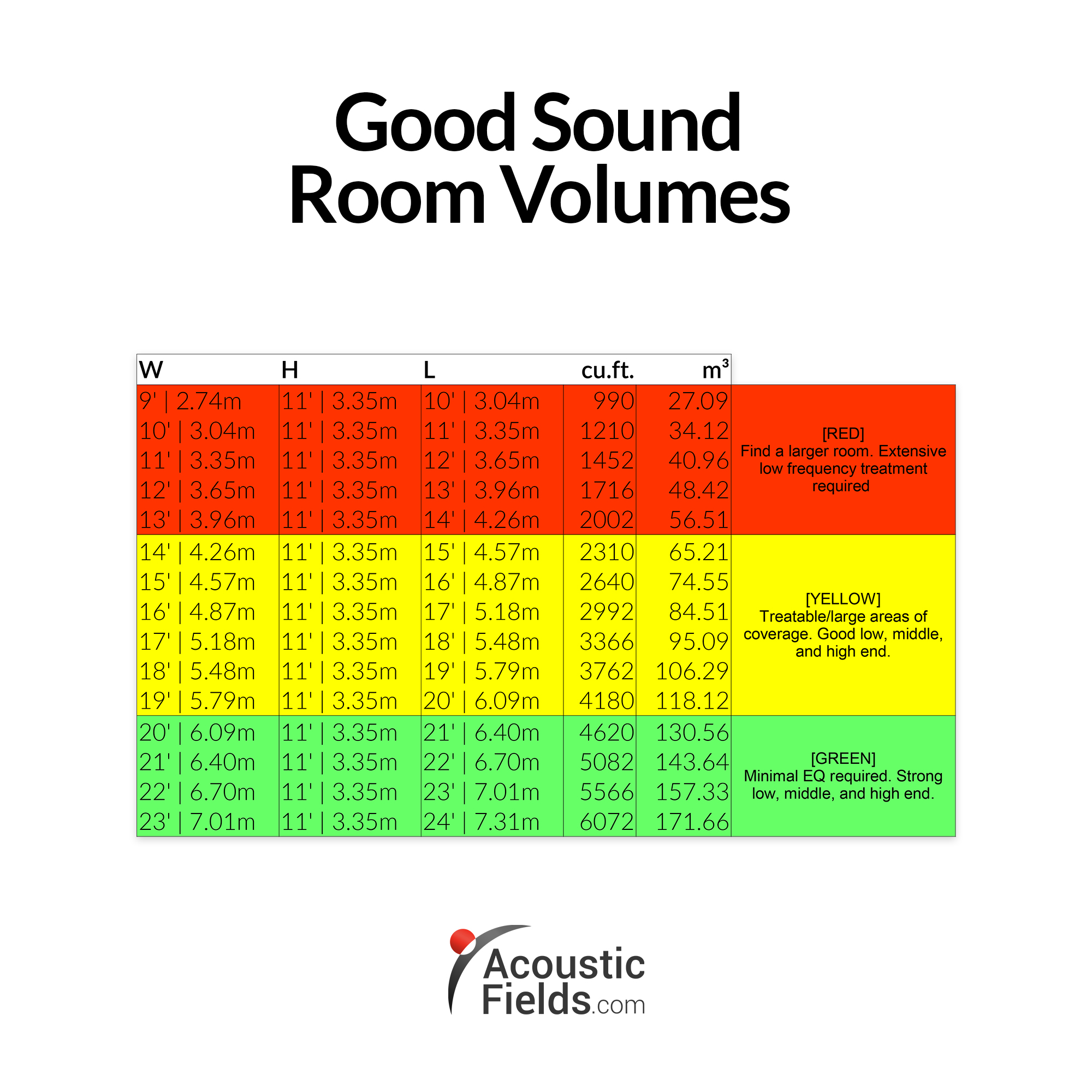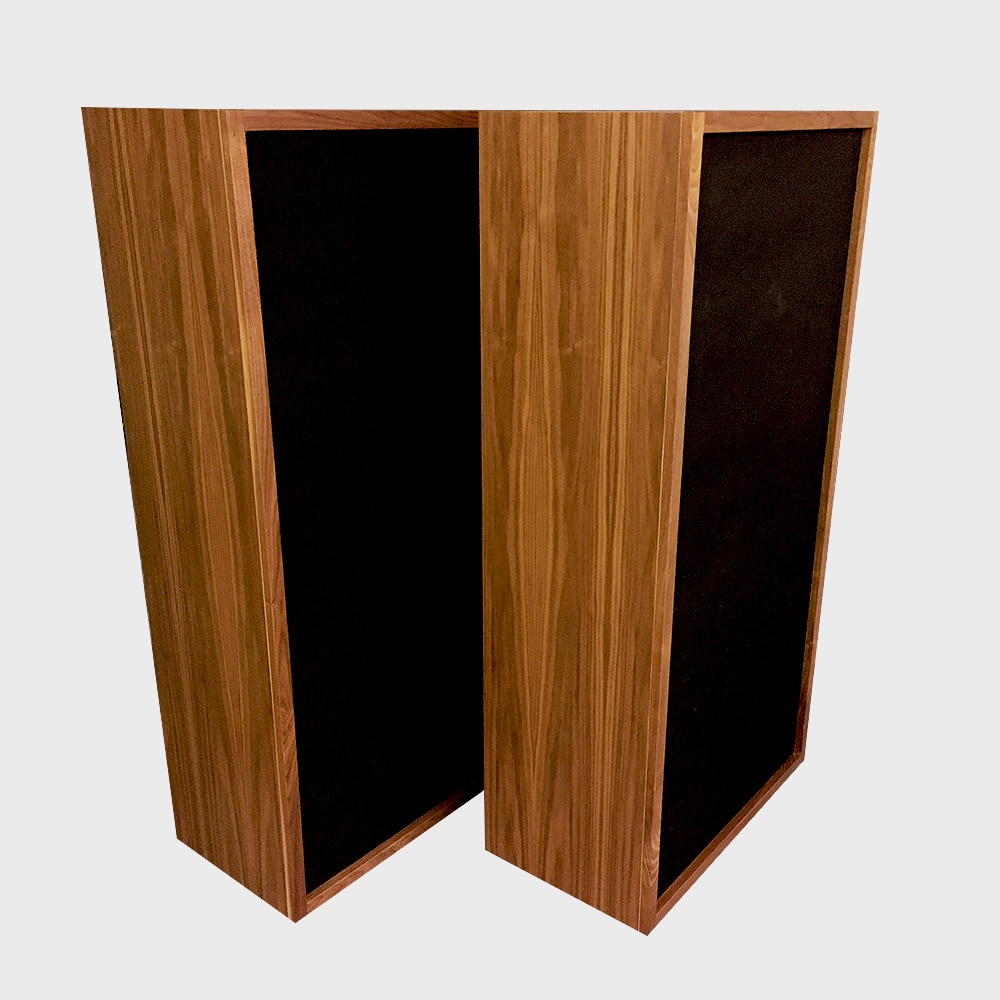Small Room Bass Problems
All small rooms have low-frequency or “bass” problems. It is the result of a combination of the wrong widths, lengths, and heights. There are certain ratios of these three dimensions that cause more small room bass problems. Your first step in finding a room that has less small room bass problems, it to find a room with the correct ratio of width, height, and length. What is the correct ratio? It all depends on the usage of the room. What are you going to do within the room? Whats instruments will be played within the room? Will drums be used or acoustic guitar. You have to first decide how much energy you will put within the room and what frequency range that energy will be used at. The room will tell you by its dimensions if it will accept some frequencies and not others. Most small rooms will accept rays of energy. It’s the waves that produce the most problems.
Waves and Rays
Waves are low-frequency energy below 100 Hz. Waves of energy 30 Hz. long can be 38′ long in length and 15′ in height. How can a wave of energy 38′ long fit in any small room? The answer is that it can not. Nor can a 40 or 50 Hz. wave. Their lengths and heights will not allow them to fit into the room dimensions. When waves of energy like ocean waves do not fit, unwanted room modal pressure will be produced. The pressure that is created by the air between the wall surfaces excites the air and causes the air to move. This air movement produces audible sound distortion. This is what people refer to as “bass boom”. Rays of energy are like sunshine. They are shorter and straighter and do not oscillate. Rays of energy are shorter lengths that can easily fit between our front and rear walls, out sidewalls to sidewalls, and our ceiling and floor.
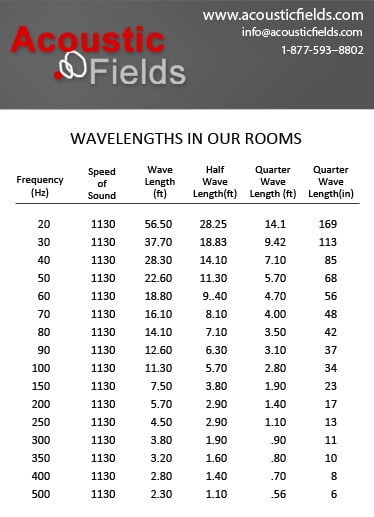
Length Of Wavelengths
Room Ratios
There are certain room ratios that minimize the low-frequency issues within the room. They have enough distance to allow for lower frequency energy to move more freely within the room. Not only do you need to be concerned about the room ratios, but you must also allow room for treating small room bass problems. Low-frequency pressure issues will need 12″ of space to treat correctly. Low-frequency energy absorption takes a special technology that has mass and requires a certain amount of space to produce good absorption results. There are three treatment types to use in treating small room bass problems. We have Helmholtz, membrane, and diaphragmatic absorption technologies. Let’s look at each one and see the features and benefits of all three.
Helmholtz Resonators
A Helmholtz resonator is a cylinder or cabinet that has a specific depth and height. The slot of the opening has to be designed with a specific length and depth. The top slot or opening is where energy enters the structure. Once it enters the cabinet it will be absorbed at the level or frequency the Helmholtz is designed to absorb at. The slot or opening along with the cabinet depth will determine the resonance frequency of the cabinet. Frequencies above the designed for resonant frequency will be absorbed. Frequencies below the resonant frequency will not be. Helmholtz resonators are frequency specific and work over narrow bands of energy. They also do not absorb as much energy as a membrane or diaphragmatic absorber.
Membrane Absorbers
Membrane absorbers have a cabinet with a certain depth. Across the face of a membrane absorber is a flexible membrane that vibrates in response to pressure waves of energy. The membrane slows the pressure wave down before it enters the cabinet. Once inside the cabinet, it is impacted by the cabinet depth and density. The depth and density of the cabinet along with the density of the front walk diaphragm determines the resonant frequency of the membrane absorbers. Membrane absorbers perform better than a Helmholtz and can cover a broader range of frequencies. The rate of absorption is determined by the internal cabinet material in combination with the front wall diaphragm. A membrane is a better absorber than a Helmholtz, but not as good as a diaphragmatic absorber. The diaphragmatic absorber is the best performer of all three.
Diaphragmatic Absorption
A diaphragmatic absorber has three main parts. There is the front wall or diaphragm that moves in sympathy with the sound pressure exerted upon it by unwanted room modal pressure areas. The cabinet inside has two parts. It has a depth that is responsible for the resonant frequency of the cabinet. All frequencies above the resonant frequency are absorbed. Those frequencies below the resonant frequency will not be. The internal cabinet fill material is responsible for the rate of absorption or how much the cabinet absorbs at which frequency. The internal cabinet fill material is directly responsible for the rate of absorption above the cabinet’s resonant frequency. The cabinet density or mass must be denser than the front wall or walls. In our design, the two front walls slow sound pressure energy down better than a single wall or diaphragm. In our design, we use activated charcoal to absorb large amounts of energy within a small space. One tablespoon has over 100 square feet of surface area coverage. We put 65 lbs in each of our ACDA units.
ACDA-10 : https://www.acousticfields.com/product-category/sound-absorption/acda-series/
Activated Carbon: https://en.wikipedia.org/wiki/Activated_carbon
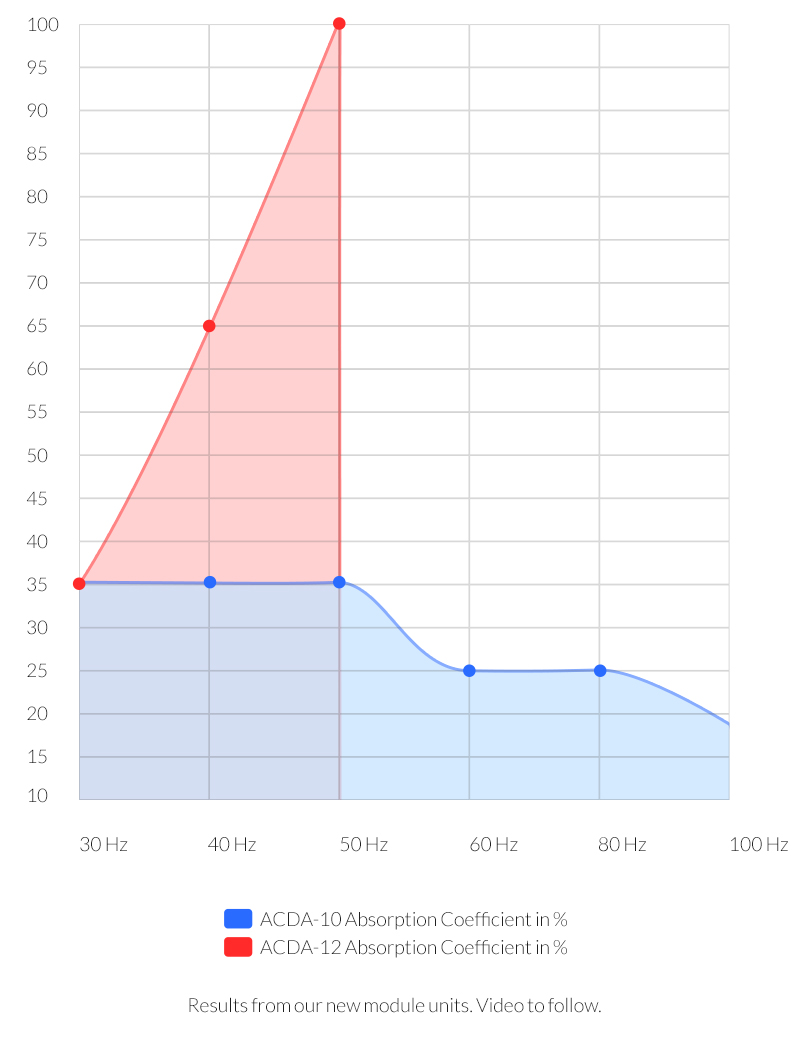
Diaphragmatic Absorption Performance
It is the combination of the density of the front two walls, the density of the cabinet, along with the cabinet depth that produces the absorption coefficients required to absorb long waves of energy within small rooms. waves of low-frequency energy are long. A 30 Hz. wave is 38′ long and 19′ high. It is a bull in a china shop. It is a pressure wave that can only be absorbed by pressure-based technology. A diaphragmatic absorber is a sealed box. It does not work on airflow like middle and high-frequency sound-absorbing technologies. Foams, boxes filled with building insulation, drapes and these type of treatments work by air flowing over their surface areas. The airflow produces friction with the surface of the foam, drapes etc. The friction produces heat which is an energy change. With the energy transformation, we have absorption.
About Us At Acoustic Fields: https://www.acousticfields.com/about/


